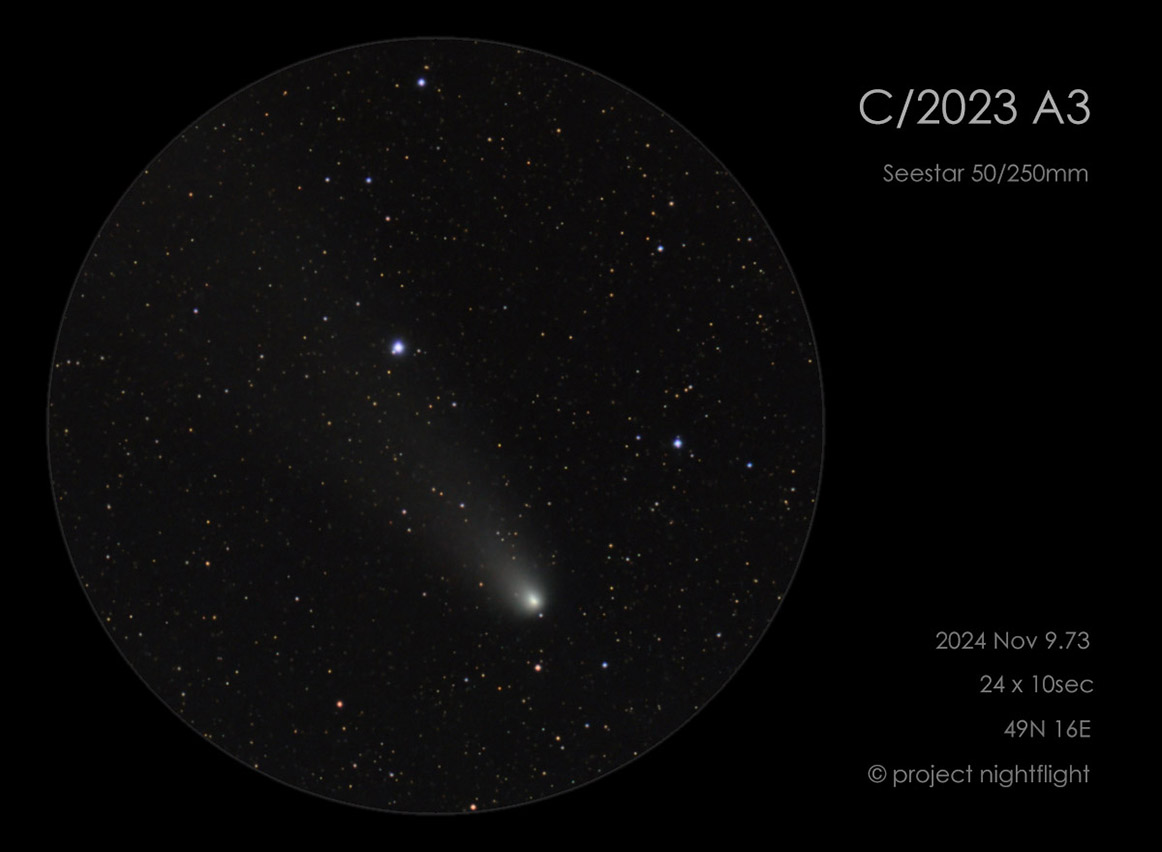A study of Comet C/2023 A3 (Tsuchinshan-ATLAS)
In 2024, we followed Tsuchinshan-ATLAS for more than half a year.
During that time we used different equipment to observe its changing appearance, brightness and development of the tails.
Our first encounter with the comet was on April 24, when we shot this image with a Seestar S50 bot from one of our usual observing sites in Austria.
At this time the object had an apparent magitude of 10 but had already developed a nice dust tail.
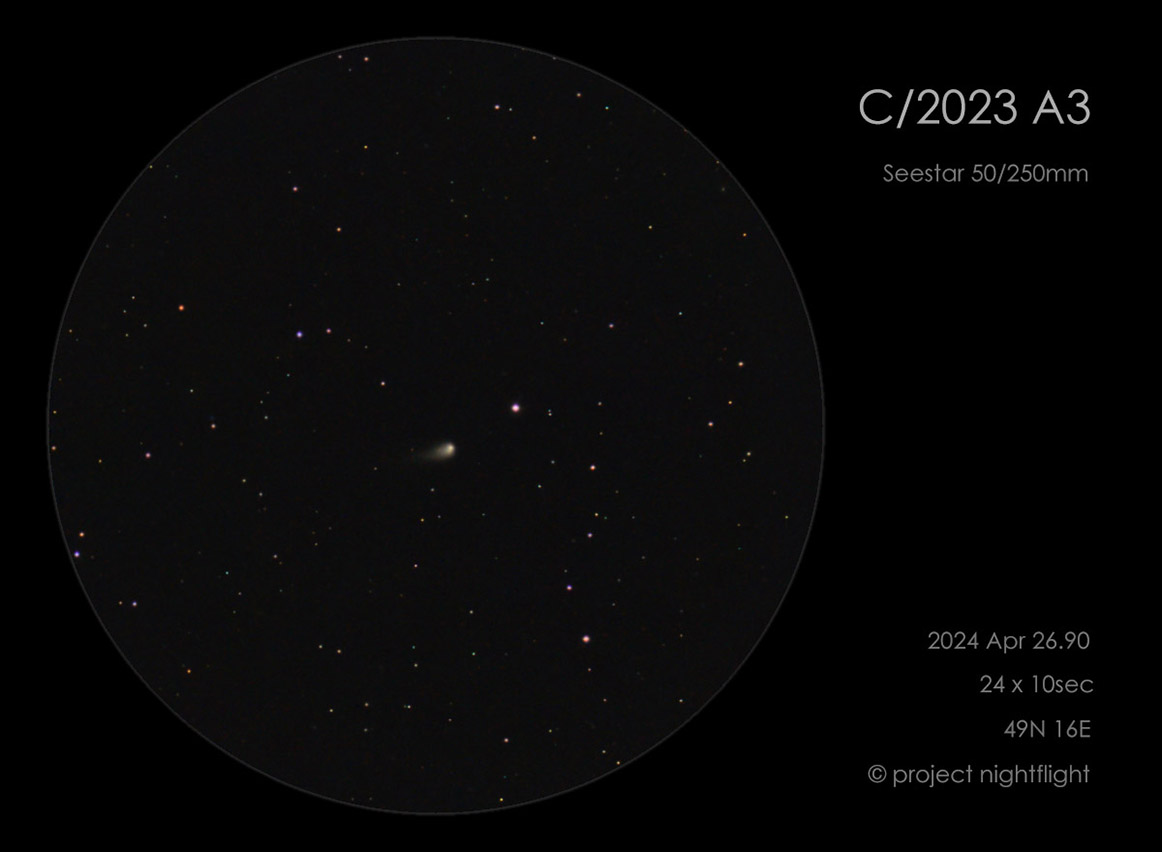
Several months later, when we arrived on La Palma island on October 19, the comet was a bright object in the evening sky, easily visible to the unaided eye during
nautical twilight. Observed through 10x30 binoculars, the tail spanned 12 degrees and was a stunning sight next to the summer Milky Way. At dusk‘s end we made
16 untracked 10-second exposures with a DSLR and a 16mm fisheye lens from a dark site 760m above sea level. This is the resulting image of the processed stack:
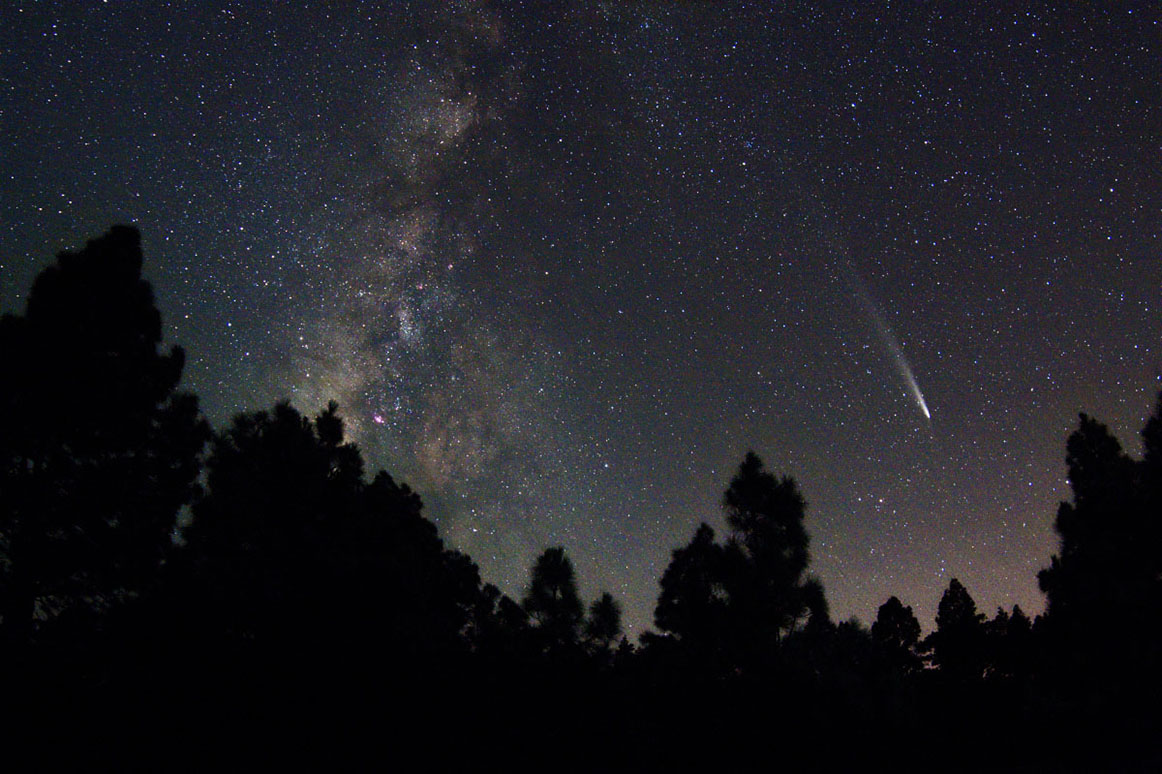
Three days later, on October 22, we fought a battle with the clouds and had to try a location further down, at 550m above sea level. At this elevation, transparency
is still good on La Palma island. We were lucky to get a clear spot in the cloud cover and managed 9 tracked 1-minute DSLR exposures with a 50mm lens and an
LPS-P2 light pollution filter. The result shows the impressive length of the tail and a hint of the anti-tail the comet had developed by that time.
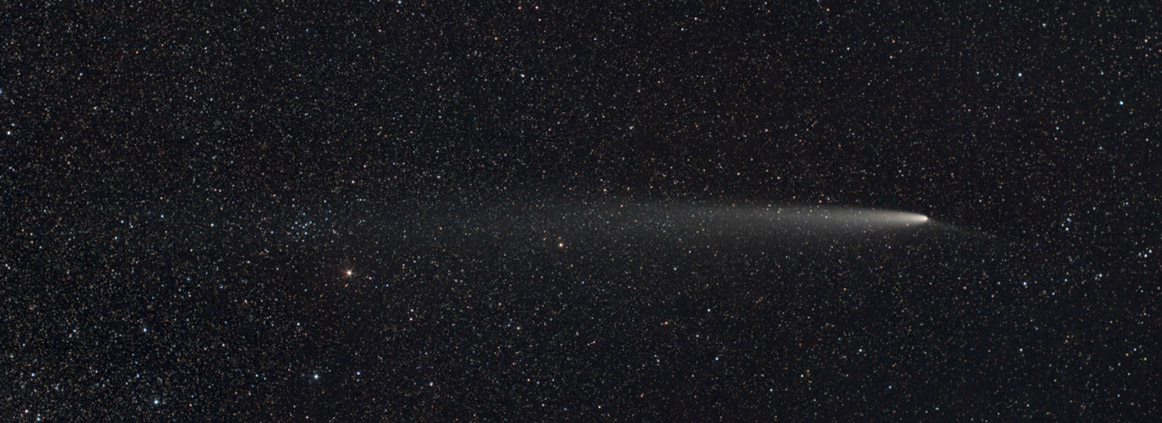
From the same location on La Palma, two days later, on October 24, we observed the comet visually with a small refractor 50/200mm. Using magnifications of 8x,
17x and 33x, we made the pencil sketch below. It gives an impression of the telescope view and shows the false nucleus, the prominent dust tail, one streamer of
the ion tail and the bow shock in the comet‘s head.

In the following days, Tsuchinshan-ATLAS got farther away from Earth and its size and brightness faded. On October 29 the comet was on the threshold of unaided
eye visibility. With 10x30 binoculars we estimated the tail at 5 degrees. Again, we made 9 tracked 1-minute DSLR exposures with a 50mm lens and an LPS-P2 filter.
We used additional shots with a diffuser filter to enhance the star colors.
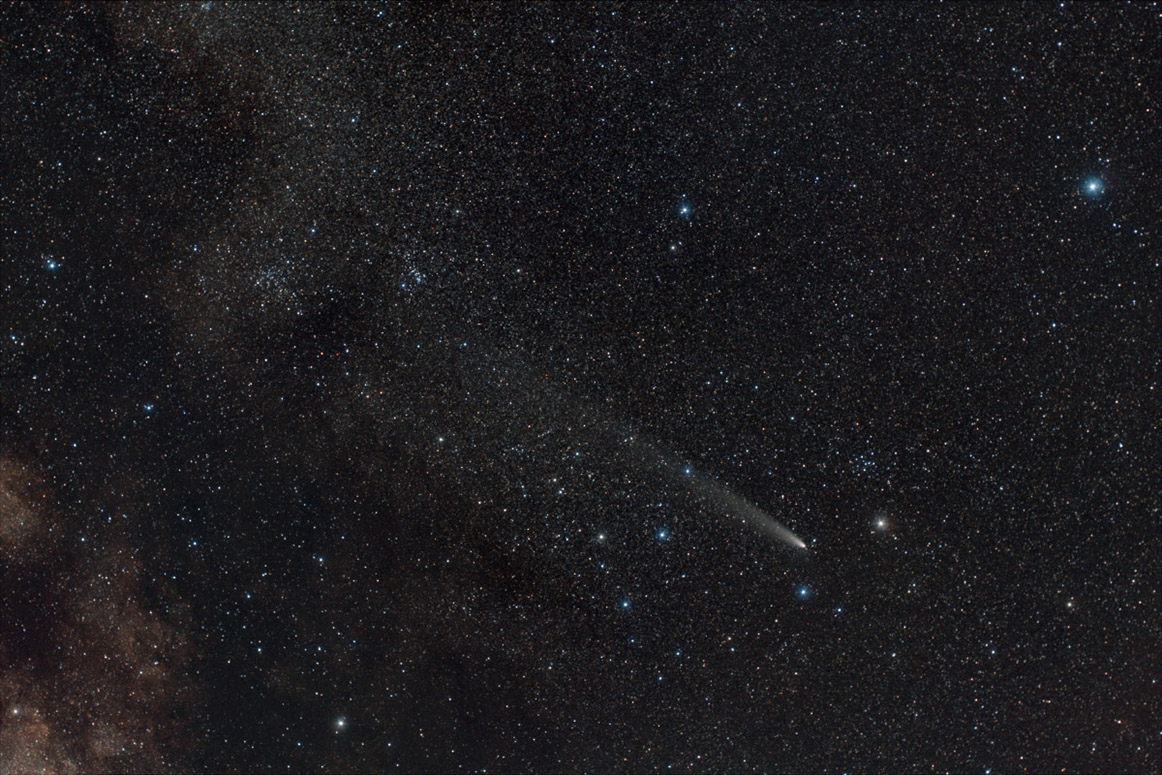
Back in Austria, on November 9, 2024, we made this last image of the comet with a Seestar S50 smart scope. Transparency was bad and the sky was bright due to
moonlight. Still, we got a nice farewell picture of the comet that had made such a splendid appearance on La Palma island.
